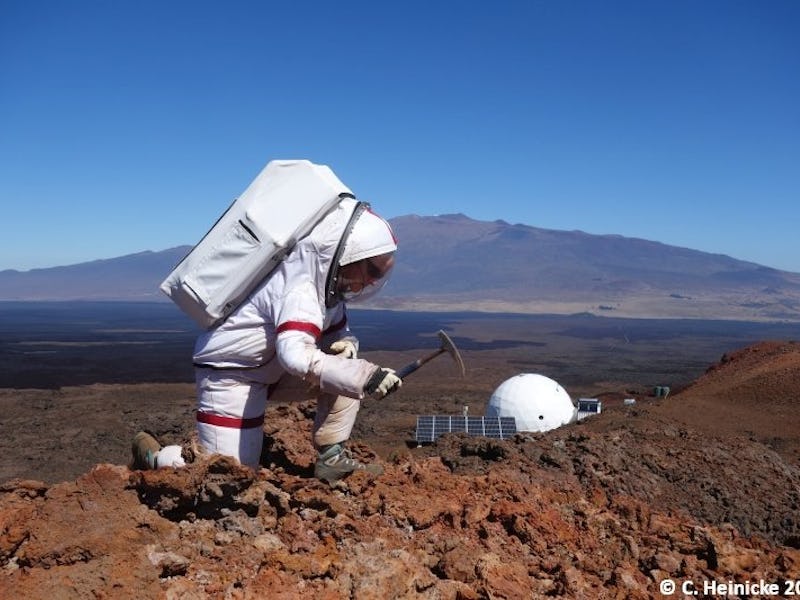For the past year, NASA has had a team of six scientists living in an exclusive facility in Hawaii. But instead of snorkeling and suntanning, the prospective astronauts have been living in a closed dome, unable to experience the outside world without a spacesuit. And now they’re coming home.
The six scientists have been training for future Mars missions by remaining in isolation in a volcanic atmosphere in Hawaii. The 365-day simulation will end on August 28, and the astronauts will be able to come out of the closed “dome” in Mauna Loa, Hawaii without a spacesuit for the first time in a year.
The project, officially called the Hawaii Space Exploration Analog and Simulation by someone who really, really wanted a punny acronym, was run through the University of Hawaii and funded by NASA. In order to accurately mimic conditions astronauts would face during the Mars missions, the team was kept isolated as much as possible, and all communication to the outside world was delayed by a 20 minute lag. The Hawaii Tribune-Herald obtained this inspiring testament to their well-being by principal investigator Kim Binsted: “They’re doing OK as far as we can tell.” Once free, Binsted says, they’ll have access to all the good stuff they’ve been kept bubbled away from for the last year — produce, the ocean, beer.
Mauna Loa was selected for this study because its volcanic features resemble the environments scientists might encounter during manned Mars missions. They’ve been housed more than a mile above sea level in a region that’s arid and without vegetation. Usually these isolation studies only last a few months, making this one the second-longest to date (after a Russian mission that lasted 520 days; you can insert your own “In Soviet Russia…” joke here).
In theory, anyway, this is like being on Mars.
The team’s leader is Crew Commander Carmel Johnson, an American scientist whose online biography says some of her favorite things are “being outside … climbing mountains, skiing, fishing, running, biking, knitting [and] baking.” We kind of hope she’s okay after this.
